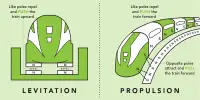Robots offer an opportunity to enable people to live safely and comfortably in their homes as they grow older. A disability robot is a robot designed to help people who have physical disabilities that impede daily tasks. The field of expertise that creates such robots is called “disability robotics”. Putting a human in the loop can help robots be useful more quickly, which is especially important for the people who would benefit the most from this technology—specifically, folks with disabilities that make them more reliant on care.
Robotics is increasingly becoming a part of digital health. Disability robot has been proven to assist people who are recovering from strokes and people who have abstained injuries that affect their daily tasks. In the near future, robots will be able to help us by cooking, cleaning, doing chores, and generally taking care of us, but they’re not yet at the point where they can do those sorts of things autonomously. Modern technology through Robotics is giving more ability to not only the disabled but all who will want to add more effectiveness to their body systems.

Disability in the current term concerns people not having a part of their body functioning the way it should. In today’s world Robotics tends to be given people a second look at what should be defined as a disability. Disability robotics is a broad category that includes wheelchairs, robotic arms, and other robotic devices that assist disabled persons of all ability levels. However, with the advancements in technology over the decades, with everything from wheelchair accessible vehicles at places like Allied Mobility, to the advancements in prosthetics and education, things are improving.
Children with severe disabilities can develop learned helplessness, which makes them lose interest in their environment. With machines now able to learn algorithms to understand images, sounds, and even languages, this can help those living with an array of disabilities such as deafness and autism to improve their day-to-day life. Robotic arms are used to provide an alternative method to engage in joint play activities. With technology always advancing, who knows what could happen in the near future, but one thing’s for sure, the world could be greatly improved for many living with various disabilities with the continued improvement in robotics. These robotic arms allows children to manipulate real objects in the context of play activities.
https://roboticsandautomationnews.com/2020/03/23/robots-robotics-and-the-disabled-population/31425/
















